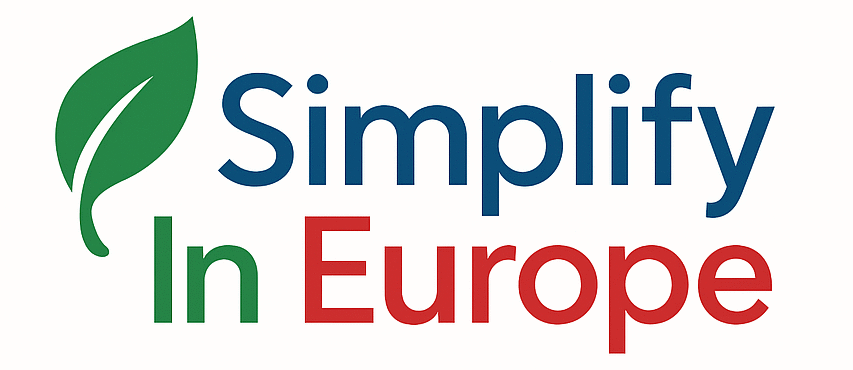Introduction: A Choice for a Better Tomorrow
The world is changing fast. Climate change, pollution, and resource waste are serious issues. But every problem has a solution. And the good news is, you are part of that solution.
Sustainable living means making choices that help the planet. It’s about using less, wasting less, and caring more. Many people believe it’s hard or expensive. But it doesn’t have to be. Sustainable living can be simple, joyful, and even cost-saving.
This article tells how everyday people—from students to families—changed their lives with small habits. It shows how you can too. You don’t need to be perfect. You just need to start.
Chapter 1: The Morning That Changed Everything
It started with a coffee cup.
Emma, a schoolteacher in Vienna, loved her morning coffee. Every day she grabbed it from a local café—always in a disposable cup. One morning, she saw a video about plastic waste floating in oceans. Sea animals are trapped in plastic. Turtles choking on straws. She felt a deep ache.
That evening, Emma bought a reusable cup. It was a small step. But it sparked something inside her. “If I can change this,” she thought, “what else can I change?”
This is how real change begins—with one small choice.
Chapter 2: The 5 Pillars of Sustainable Living
To live sustainably, you don’t need to move off-grid or build a solar-powered home. You only need to follow five simple areas:
1. Reduce Waste
Start by looking at what you throw away. Most waste comes from packaging, food, and items we don’t need.
- Carry reusable bags and bottles
- Avoid single-use plastic
- Say no to printed receipts unless needed
- Compost your food scraps
2. Save Energy
Electricity and gas use lots of resources. But you can reduce your carbon footprint with simple steps.
- Turn off lights when you leave a room
- Use energy-efficient bulbs
- Lower your heating slightly in winter
- Air dry clothes instead of using a dryer
3. Use Less Water
Water is precious. Many people forget how much we waste every day.
- Turn off the tap while brushing your teeth
- Fix leaks as soon as possible
- Take shorter showers
- Collect rainwater for plants
4. Eat Mindfully
Food choices impact the environment more than we think. Meat and dairy take up more land and water.
- Choose more vegetables and grains
- Buy local and seasonal produce
- Reduce food waste by planning meals
- Avoid over-packaged food
5. Buy with Purpose
Think before you buy. Ask yourself: Do I need this? Where did it come from?
- Support ethical brands
- Choose quality over quantity
- Buy second-hand when possible
- Repair instead of replacing
Chapter 3: Family Stories That Inspire
The Fischer Family from Berlin
Markus and Anna Fischer decided to go “low waste” when their child was born. They wanted a better future for him. At first, they made small changes—cloth diapers, reusable wipes, homemade baby food. Over time, they changed even more. Today, their trash fits into one jar a month.
“It wasn’t easy at first,” Anna admits, “but now it feels natural. We feel closer as a family. We spend less. We waste less. And we teach our son the right values.”
Luca, a Student in Rome
Luca didn’t have much money but wanted to make a difference. So, he stopped buying fast fashion. Instead, he swapped clothes with friends and used second-hand apps. “It felt good,” he says. “It wasn’t just about saving money. I knew I was helping the planet too.”
These stories show that anyone, from any background, can live sustainably. It’s not about doing everything. It’s about doing something.
Chapter 4: Myths About Sustainable Living
Many people don’t try because they believe these myths:
“It takes too much time.” Once habits form, they become automatic. Like brushing your teeth, but for the Earth.
“It’s too expensive.” In truth, many sustainable choices save money. Think of less shopping, lower bills, and reduced waste.
“One person can’t make a difference.” But if everyone thought this, nothing would change. Millions of small actions lead to big results.
“It’s only for rich people.” Not true. Some of the most powerful changes—like using less water or reusing items—cost nothing.
Chapter 5: Emotional Connections with Nature
When we connect with nature, we care more about it.
Remember the first time you walked barefoot on fresh grass? Or smell the rain on dry soil? These simple joys remind us why protecting the Earth matters. Sustainable living is not just a rulebook. It’s a relationship. One that gives more than it takes.
Every time you choose to reuse, repair, or recycle, you are telling the planet: “I care.” That care builds hope—not just for today, but for future generations.
Chapter 6: Tools, Apps, and Support
You don’t have to do it alone. Many tools can help:
- Too Good To Go (save food from being wasted)
- OLIO (share extra food with neighbors)
- BlaBlaCar (share rides and reduce emissions)
- Refill (find water refill stations near you)
- Good On You (check how ethical clothing brands are)
There are also local communities and online forums full of people sharing ideas, struggles, and support. Join a sustainability group in your city. Attend eco-markets or repair cafés. When we act together, we go further.
Chapter 7: Transitioning Your Lifestyle – A 30-Day Plan
Here’s a simple plan anyone can follow to make real changes:
Week 1: Mindset Shift
- Watch a documentary like The True Cost of Minimalism
- Walk in nature without your phone
- Write down why you want to live sustainably
Week 2: Home Habits
- Start composting or sorting your trash better
- Switch to reusable items
- Check energy use at home
Week 3: Food & Shopping
- Try meatless meals 3 times a week
- Use cloth bags for shopping
- Buy local, seasonal produce
Week 4: Share and Reflect
- Teach a friend or family member something new
- Donate unused items
- Write down what you’ve learned and how you feel
Chapter 8: A Message to the Future
Imagine your grandchildren asking: “What did you do when the Earth needed help?”
Will you say: “I changed what I could. I chose better. I cared.”?
That answer will matter.
Sustainable living isn’t just about saving resources. It’s about showing love—for our planet, for each other, and for the life we share. It’s about building a world where clean air, freshwater, and natural beauty are not rare gifts, but everyday joys.
Start with what you have. Start where you are. And know that each step counts.
Conclusion: Your Path Begins Today
Sustainable living is not a trend. It’s a return to what truly matters. It’s not about being perfect. It’s about trying. Start with one change. Then another. Keep going. Before you know it, you’ll be living a life that feels richer, fuller, and kinder—not just to the planet, but to yourself.
Because small steps, when taken together, create big change.


Leave a Reply